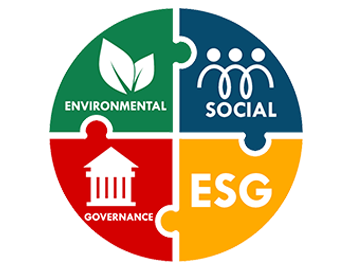 ESG - Environmental, Social and Governance
ESG - Environmental, Social and Governance
Progress Towards Carbon Reduction Target
AASTMT Strategic Pathways to Sustainability and Carbon Reduction
- Introduction
Purpose: The Climate Action Plan 2022/2023 underscores the Arab Academy for Science, Technology, and Maritime Transport’s (AASTMT) commitment to sustainable practices, aligning with Egypt's national energy goals and the objectives of Sustainable Development Goal 13 (SDG 13) for Climate Action. By actively integrating sustainable practices across operations, education, and community initiatives, AASTMT seeks to make a measurable impact on reducing carbon emissions and advancing climate resilience.
Vision: AASTMT aims to achieve a 50% reduction in carbon emissions by 2040, taking a leadership role in renewable energy adoption and environmental stewardship. This goal is aligned with Egypt’s national renewable energy plan, which targets 40% renewable energy by 2040. By fostering sustainable practices within academic, operational, and community frameworks, AASTMT promotes education on climate action and builds partnerships to encourage collective responsibility toward a more resilient, sustainable future.
- Carbon Emissions Reduction Goals
Interim Target: Achieve a 30% reduction in carbon emissions by 2025.
Long-Term Target: Accomplish a 50% reduction in carbon emissions by 2040, in alignment with national sustainability efforts and Egypt’s renewable energy plan.
Strategies:
- Expand Renewable Energy Installations: Prioritize the installation of solar panels and other renewable energy sources across AASTMT campuses, aiming to meet increasing portions of campus energy demand sustainably.
- Transition Campus Vehicle Fleet to Electric: Gradually replace the campus fleet with electric vehicles to minimize emissions from transportation, ensuring lower carbon outputs and supporting air quality initiatives.
- Implement Advanced Energy Efficiency Technologies in Facilities: Integrate smart energy management systems, upgrade lighting to LED, and optimize HVAC systems to maximize energy efficiency in all facilities, contributing to emissions reductions while enhancing energy conservation.
- Renewable Energy Adoption
Targets:
- Meet 25% of AASTMT’s energy needs through renewable sources by 2025.
- Achieve 40% renewable energy usage by 2040, supporting both institutional goals and Egypt’s national renewable energy plan.
Initiatives:
- Increase Solar Panel Installations on Campus: Expand the use of solar panels across AASTMT facilities to maximize on-site renewable energy generation, reducing reliance on non-renewable sources.
- Explore Hybrid and Other Clean Energy Sources: Assess potential hybrid systems, such as combining solar with wind or battery storage, and investigate other sustainable energy technologies to diversify and strengthen the renewable energy portfolio.
- Energy Efficiency Improvements
Goal: Achieve a steady reduction in campus energy consumption by 2025.
Key Actions:
- Retrofit Existing Facilities with LED Lighting: Upgrade lighting systems across AASTMT buildings to energy-efficient LED lighting, which significantly reduces electricity usage and lowers overall energy consumption.
- Install Smart Building Management Systems for Real-Time Energy Monitoring and Optimization: Implement advanced building management technology to monitor energy usage, adjust systems for optimal efficiency, and reduce unnecessary power consumption across campus facilities.
- Sustainable Resource Management
Objectives:
- Divert 70% of Waste from Landfills by 2030.
- Achieve Zero-Waste Status by 2040.
Programs:
- Launch Waste Reduction, Recycling, and Composting Programs: Develop campus-wide initiatives to minimize waste production, including increased recycling efforts, composting organic waste, and promoting waste reduction practices among students and staff.
- Establish Partnerships with Suppliers for Sustainable Procurement: Collaborate with suppliers to prioritize sustainable materials and packaging, ensuring that products procured by AASTMT align with circular economy principles and support the university's waste reduction goals.
- Integration of Sustainability in Education
Academic Goals:
- Ensure 90% of Undergraduate and Postgraduate Programs Include Climate Change and Sustainability Content.
Activities:
- Develop Climate-Focused Modules Across Disciplines: Incorporate sustainability and climate change themes in course content across diverse fields, ensuring that students gain relevant knowledge and skills in environmental stewardship, regardless of their primary discipline.
- Facilitate Climate Research Projects on Renewable Energy, Sustainable Transportation, and Resilience: Promote interdisciplinary research initiatives that focus on key areas like renewable energy innovations, sustainable transportation solutions, and strategies for climate resilience, engaging students and faculty in addressing global climate challenges through applied research.
- Community and Government Engagement
Engagement Strategy:
- Partner with Local Governments, NGOs, and Community Groups for Collaborative Climate Action: AASTMT aims to build lasting partnerships that support and amplify climate resilience efforts at the community level, aligning with both local and regional sustainability priorities.
Initiatives:
- Host Climate Awareness Workshops: Conduct workshops for community members to raise awareness on climate change, covering topics such as sustainable practices, emissions reduction, and local climate adaptation.
- Engage in Joint Projects Focusing on Disaster Preparedness, Climate Resilience, and Sustainability Practices: Collaborate on projects with local governments, NGOs, and community groups to implement disaster preparedness initiatives, strengthen resilience to climate impacts, and promote sustainable practices that contribute to the long-term well-being of the community.
- Monitoring and Reporting
Objective: Ensure transparency and accountability in AASTMT's climate action initiatives through structured tracking and regular reporting.
Actions:
- Annual Emissions Tracking and Reporting: Conduct detailed yearly assessments of carbon emissions across Scopes 1, 2, and 3 to evaluate progress toward interim and long-term reduction goals.
- Third-Party Audits: Engage an independent, third-party audit every two years to validate progress, ensuring thorough oversight on emissions reductions and resource management efforts.
- Periodic Stakeholder Reports: Publish an annual report detailing progress, updates on key initiatives, and measurable outcomes related to energy efficiency, renewable energy adoption, waste management, and emissions reductions. This report will be shared with stakeholders to maintain transparency and engage the university community in ongoing efforts.
To support effective tracking and monitoring, AASTMT will implement an Action Plan Table to outline objectives, specific actions, targets, timelines, and designated responsibilities. This approach will simplify the tracking of AASTMT’s sustainability initiatives, keeping efforts focused and measurable.
Table 1: Action Plan Table.
|
Objective |
Action |
Target |
Timeline |
Responsible Parties |
|
Carbon Emissions Reduction |
Achieve 30% reduction in carbon emissions |
30% by 2025 |
2022–2025 |
Sustainability Office |
|
Renewable Energy Adoption |
Source 25-40% of campus energy from renewables |
25% by 2025; 40% by 2040 |
2022–2040 |
Facilities Management |
|
Energy Efficiency Improvements |
Retrofit facilities with energy-efficient systems |
Steady energy reduction by 2025 |
2022–2025 |
Facilities & Campus Operations |
|
Sustainable Resource Management |
Launch recycling and composting programs |
Divert 70% waste by 2030 |
2022–2030 |
Campus Services |
|
Education and Research |
Integrate sustainability into programs |
90% of programs by 2025 |
2022–2025 |
Academic Affairs |
|
Community Engagement |
Host climate awareness workshops |
Regular sessions throughout the year |
Ongoing |
Public Relations & Outreach |
|
Reporting and Accountability |
Publish annual sustainability report |
Annual public report |
Annual |
Sustainability Office |
This Action Plan Table provides a straightforward, transparent format for tracking AASTMT’s progress on sustainability and climate goals, facilitating alignment with long-term targets and fostering accountability across all initiatives.
- Funding and Resources
Financial Planning: Secure diverse funding streams, including government grants, industry partnerships, and external funding sources, to provide sustainable financial support for AASTMT's climate action initiatives.
Allocation: Prioritize allocation of resources to critical areas, including renewable energy projects, academic research, and community outreach programs, ensuring effective implementation of carbon reduction, sustainability education, and community engagement goals.
- Review and Updates
AASTMT will conduct regular evaluations of the Climate Action Plan to ensure that goals remain aligned with evolving climate policies, technological advancements, and feedback from the university community and stakeholders.
Table 2: Review and Updates Table.
|
Review Activity |
Objective |
Frequency |
Responsible Parties |
Notes |
|
Annual Emissions Review |
Assess current emissions and progress toward reduction targets |
Annually |
Sustainability Office |
Use updated data to refine strategies if needed |
|
Third-Party Audit |
Validate progress with independent review |
Every 2 years |
External Auditor |
Include recommendations for improvement |
|
Stakeholder Feedback Collection |
Engage stakeholders in action plan assessment |
Annually |
Public Relations & Sustainability Office |
Incorporate feedback from students, staff, and external partners |
|
Goal Alignment with National Policies |
Ensure alignment with Egypt’s national energy and climate goals |
Every 5 years |
Sustainability & Policy Office |
Adjust targets to stay consistent with any new national commitments |
|
Progress Report Publication |
Provide transparent updates on key climate initiatives |
Annually |
Sustainability Office |
Share with stakeholders to maintain transparency and engagement |
|
Review of Educational Integration |
Ensure sustainability is effectively integrated in curricula |
Every 3 years |
Academic Affairs |
Update climate-related curriculum based on technological advances |
|
Technology and Innovation Assessment |
Explore new tech advancements in sustainability |
Every 3 years |
Facilities Management & Tech Department |
Evaluate new technologies for energy, waste, and emissions management |
Approved and endorsed by:
Prof. Dr. Kareem Tonbol
Dean of Scientific Research for Maritime Affairs
Arab Academy for Science, Technology & Maritime Transport (AASTMT)
Date: 01/01/2023


